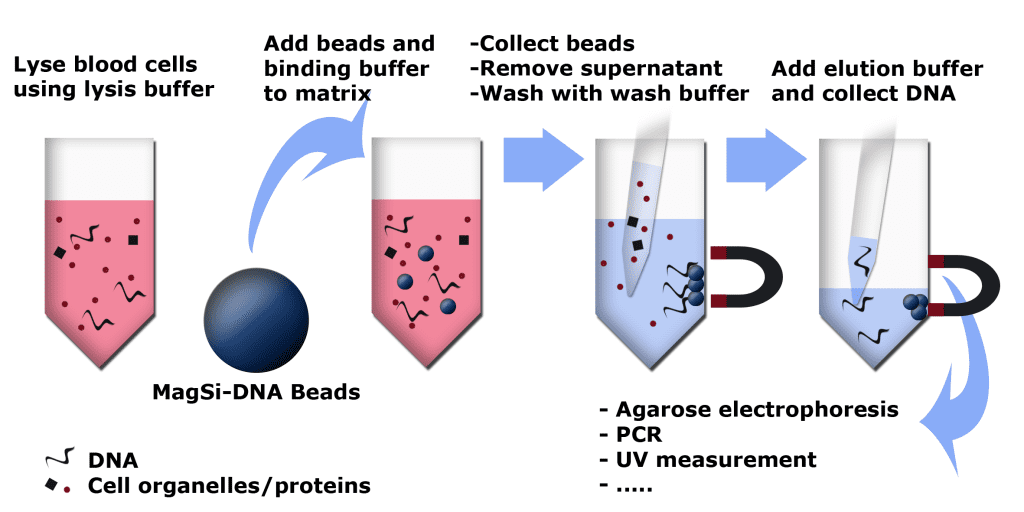Magnetic Bead Technology Explained
Home > Technology > Magnetic Bead Technology Explained
Understanding Magnetic Beads
Magnetic beads have sparked a transformative impact across research and diagnostics, serving as an essential tool for biomolecule isolation. This comprehensive guide takes you on a journey through the captivating world of magnetic beads, shedding light on their working principle and wide-ranging applications.
What are Magnetic Beads?
Magnetic beads are minute, solid particles, sometimes coated with functional groups, enabling them to specifically bind to biomolecules like DNA, RNA, proteins, and antibodies. Composed of magnetic materials, such as iron oxide or magnetite, these beads respond to external magnetic fields, granting researchers easy control and separation during sample processing.

How Do They Work for Biomolecule Isolation?
Now that we grasp their nature, let’s explore how magnetic beads actively participate in biomolecule extraction, particularly in nucleic acid isolation. Allow us to walk you through the simplified, step-by-step process:
Lysis
The journey commences with researchers breaking down the biological sample (e.g., cells, tissues, blood, or bodily fluids) to release the target nucleic acids. With this step they open up the cells and denature its proteins, exposing the nucleic acids.
Binding
Watch as magnetic beads, coated with molecules exhibiting a high affinity for nucleic acids, make their grand entrance into the sample. The enchanting dance of direct binding between the nucleic acids and the beads’ surface ensues.
Magnetic Separation
It’s time for the magnetic spectacle! Researchers deftly apply an external magnetic field, as magnetic beads take center stage. A mesmerizing attraction unfolds, pulling the bound nucleic acids along while leaving the rest of the sample behind in the solution.
Washing
With the initial union complete and safely on the magnet, we proceed to remove unbound and undesirable substances. Through meticulous washing steps, the stage is set for the last act.
Elution
As the magnetic field is removed, the nucleic acids are eluted from the magnetic beads using elution buffers. This releases the purified nucleic acids from the magnetic beads, making them available for downstream applications like PCR, qPCR, DNA sequencing, or other genetic analyses.
Applications and Advantages
Magnetic bead technology finds extensive application across diverse research fields and diagnostic purposes, presenting several key advantages:
Speed and efficiency
Magnetic bead-based methods can be completed relatively quickly, enabling high-throughput processing of samples
High yield and purity
The specific binding of nucleic acids to the magnetic beads results in high yields of pure nucleic acids, free from contaminants and inhibitors.
Automation compatibility
The process can be easily automated using robotic systems, allowing for increased consistency and reduced hands-on time.
Scalability
Magnetic bead-based protocols can handle diverse sample volumes, making them adaptable to different experiment scales.

In conclusion
With its versatility and effectiveness, magnetic bead technology has become an indispensable tool for researchers and clinicians alike. Whether in molecular biology, genomics, proteomics, or diagnostics, these tiny beads continue to drive advancements and accelerate scientific discoveries.

Example: DNA extraction from blood by MagSi-DNA beads
